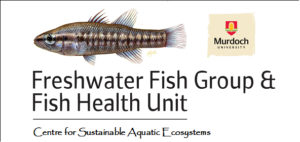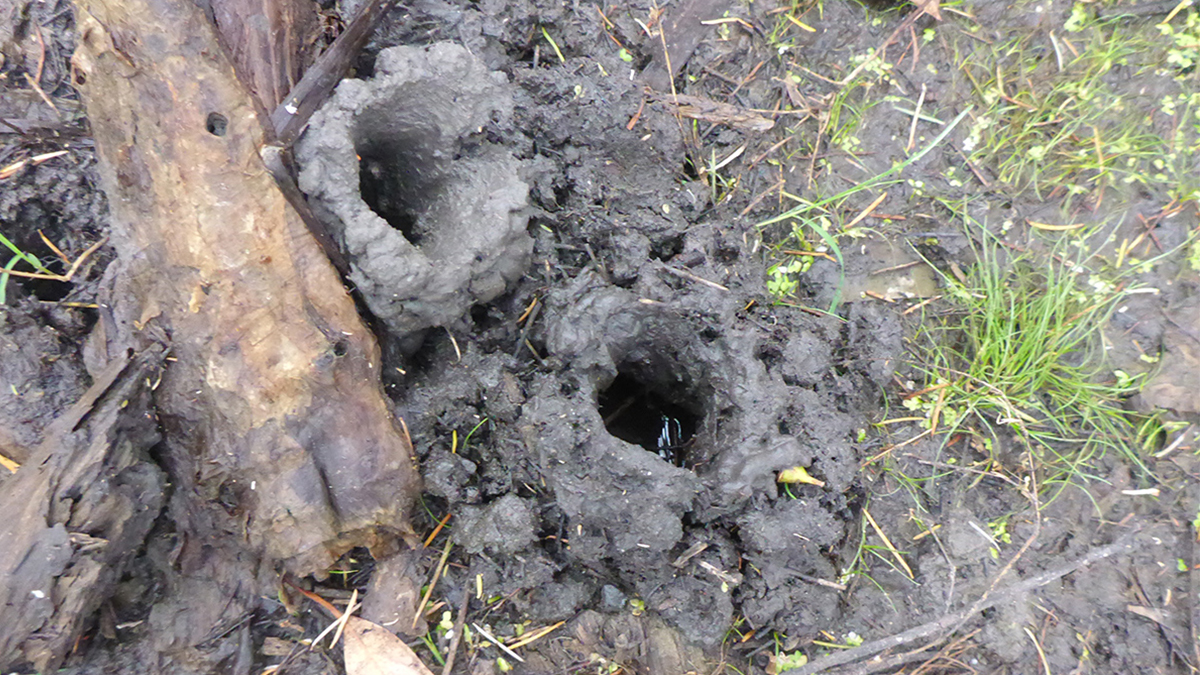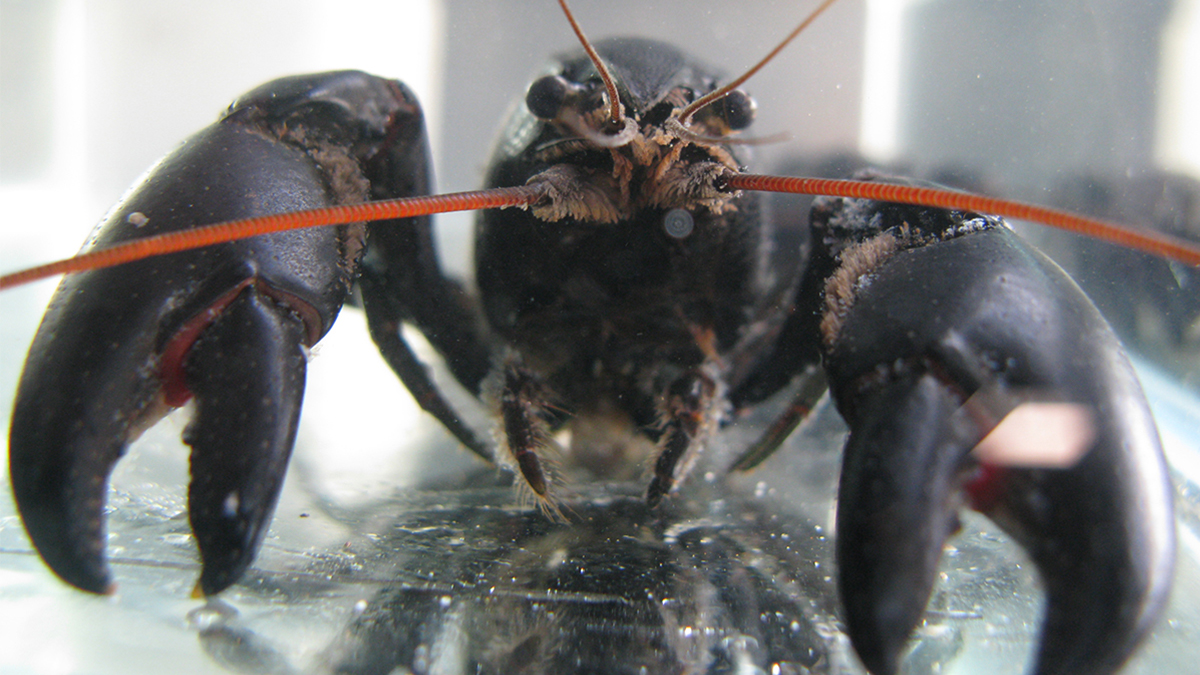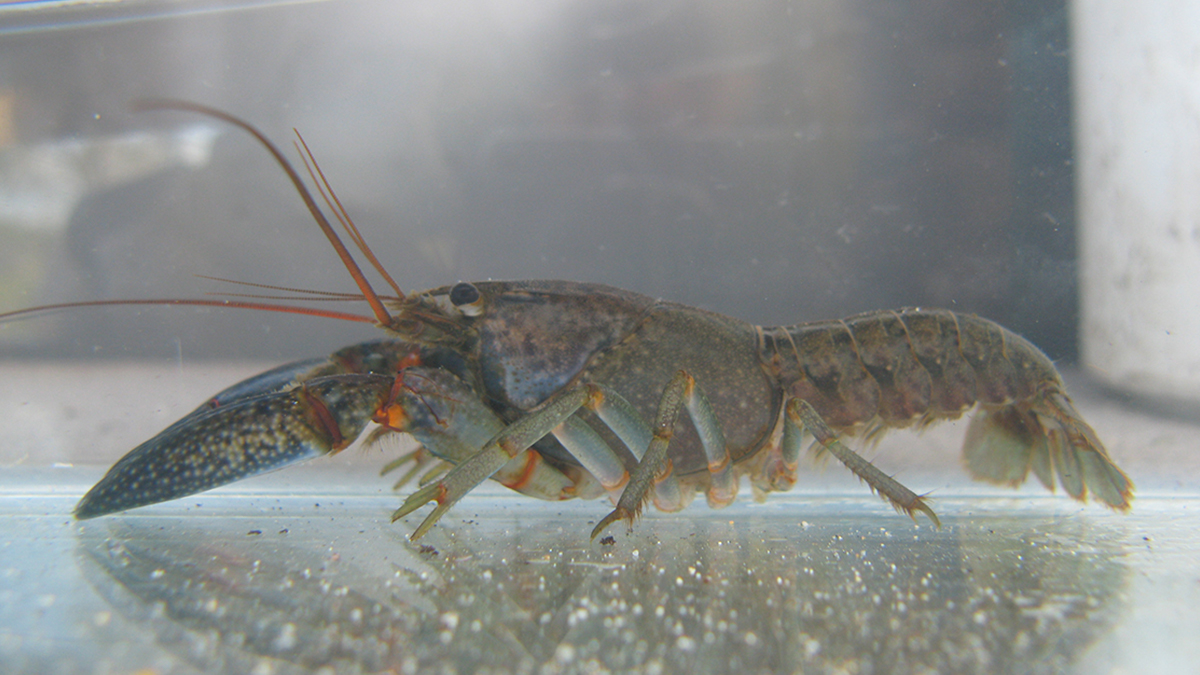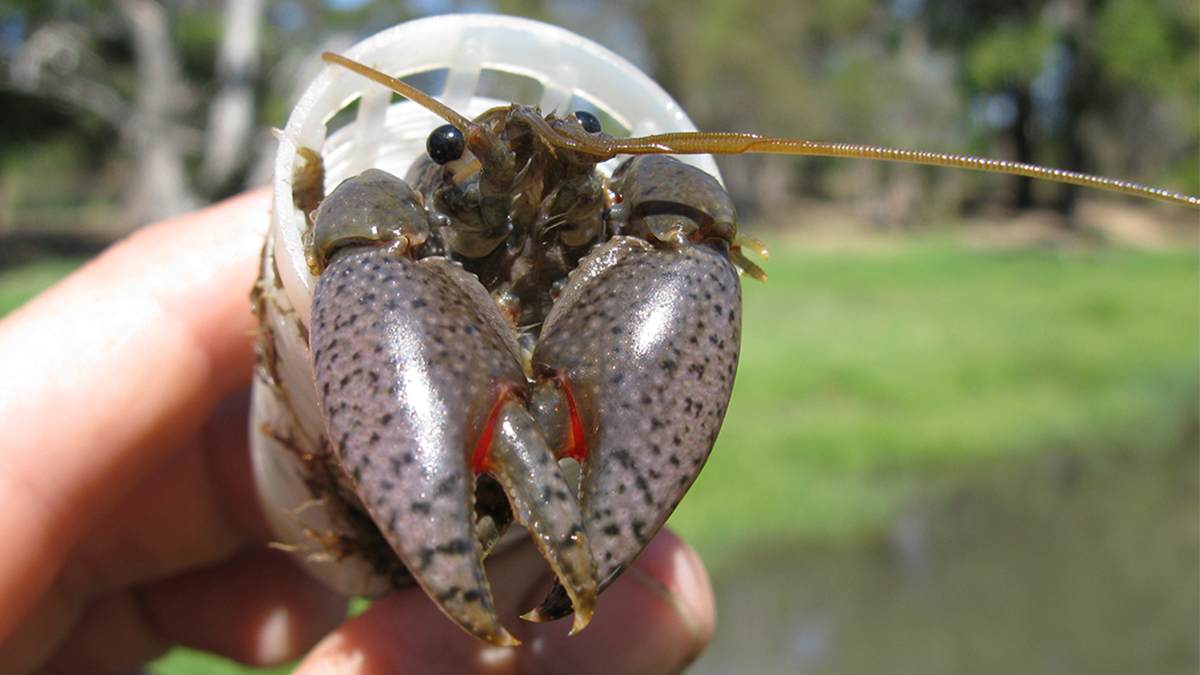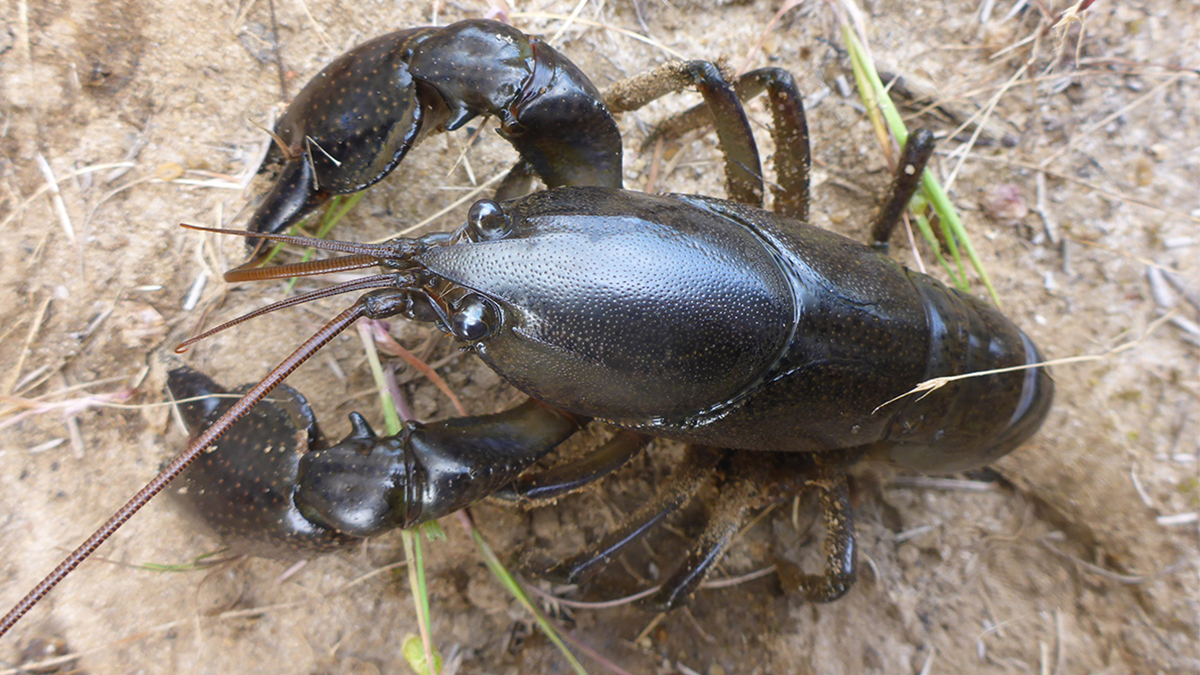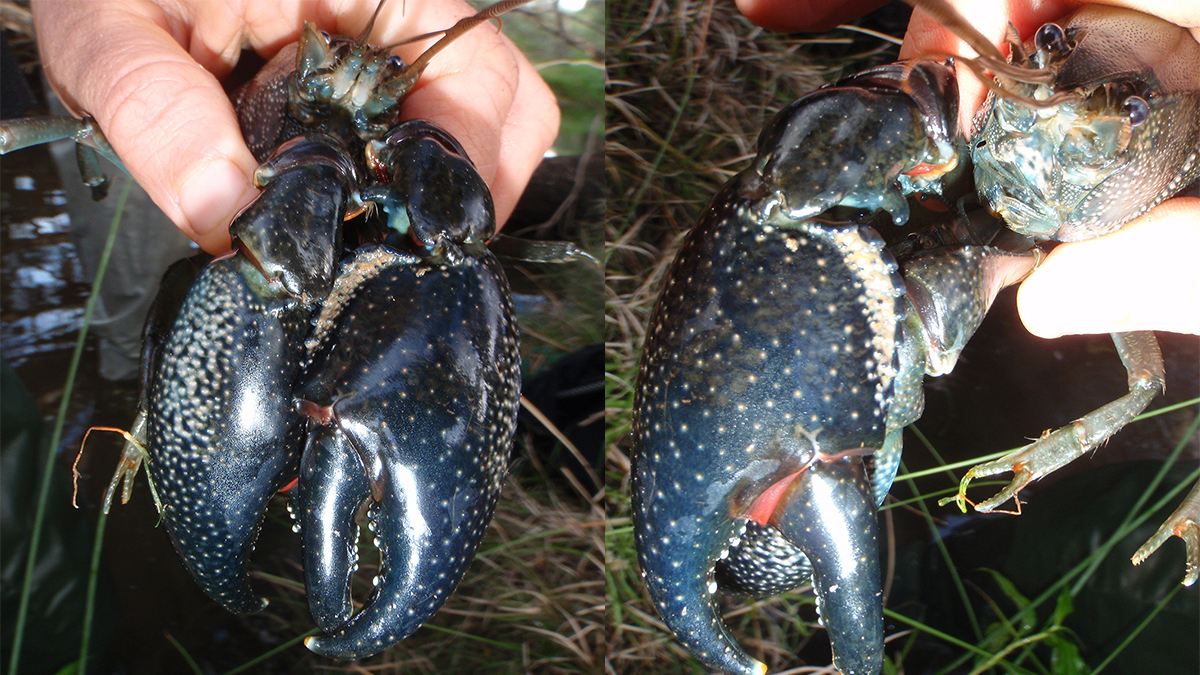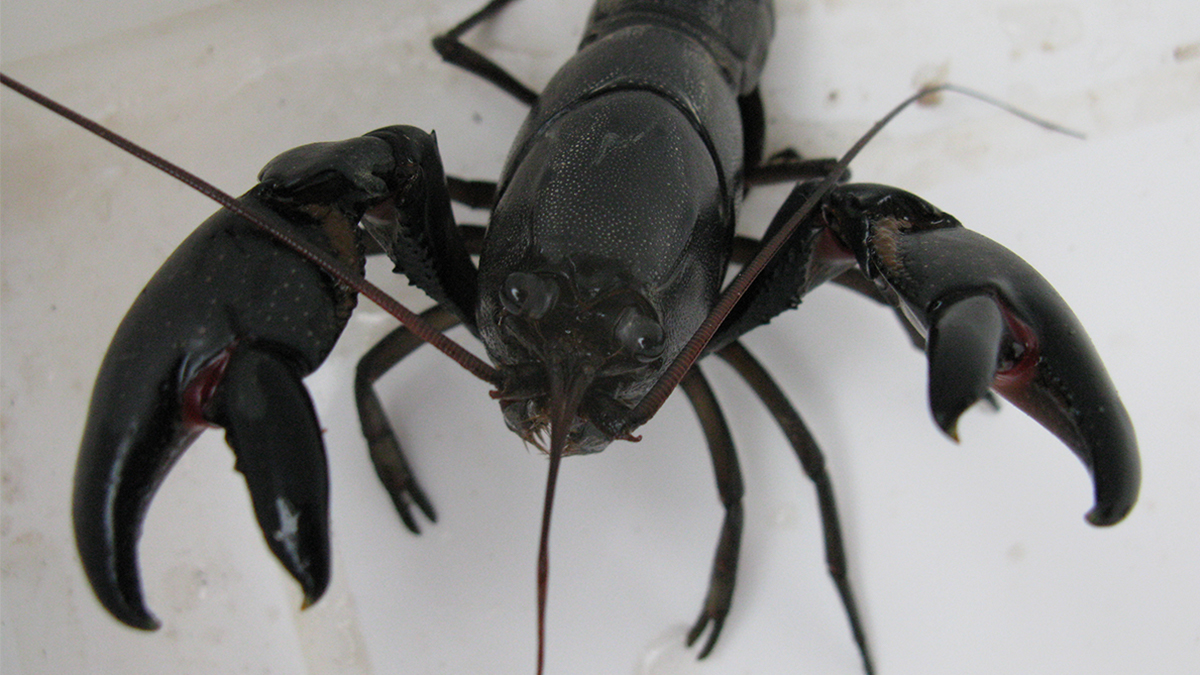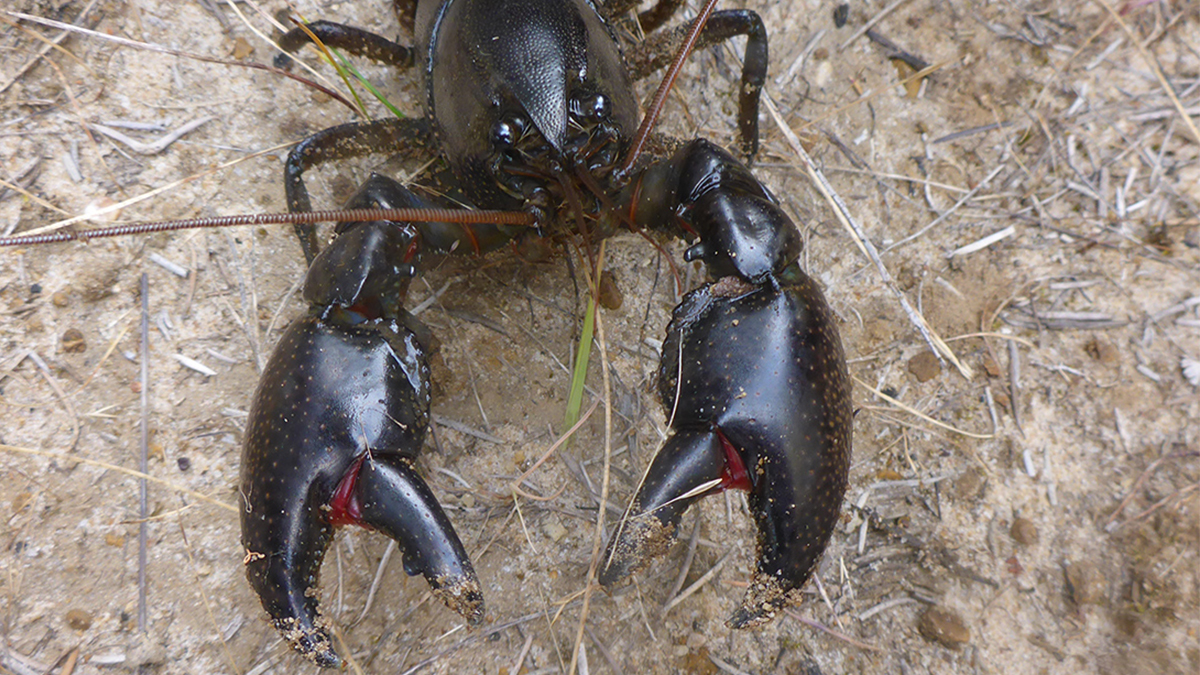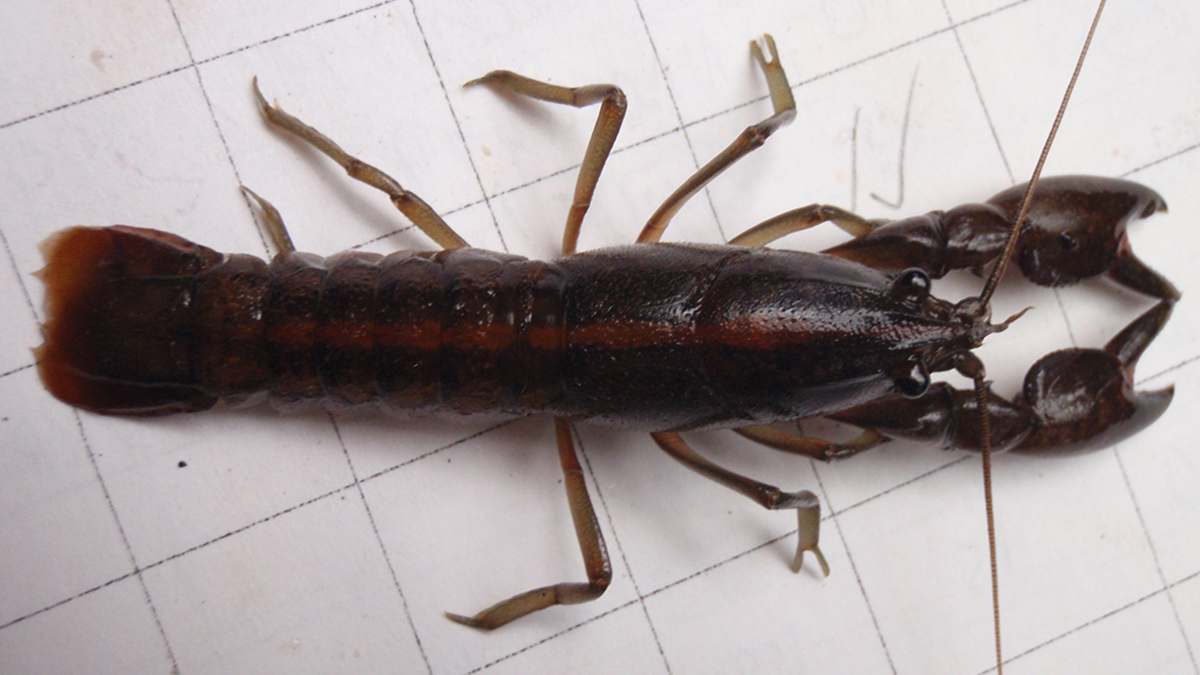Koonac - Cherax preissii
This page was created in partnership with the Freshwater Fish Group and Fish Health Unit at Murdoch University
Identification
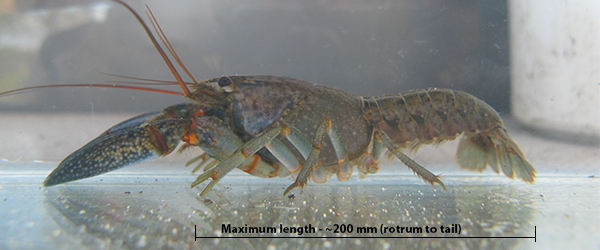
Distinguished by 4 keels on the head, two of which are typically less prominent, and large spade-like claws (most obvious in larger specimens and males). No spines on the telson and rostrum, and the rostrum is short and curved compared to the other crayfish species. Considerable differences exist in appearances across the distribution depending on the habitat type.
Colour varies from bluish-purplish black through to dark brown, and can have an orange stripe down the middle of the cephalothorax and tail.
Maximum length to around 200 mm (rostrum to tail).
Distribution
Common and widespread in rivers, streams and wetlands from the Moore River to just east of Albany, primarily in fresh and slightly brackish waters, and in higher order streams. Particularly favours systems that dry seasonally with a strong burrowing behaviour during the dry season.
Habitat
Will occupy a range of freshwater habitats, but typically encountered in seasonally inundated wetlands and headwater streams.
The spade-like claws support the specialist niche of this species in areas that regularly dry, enabling them to easily burrow into sediment to maintain contact with the water table (avoiding desiccation over warm, dry summer months).
Biology
Reproductive biology is not well studied, but follows a similar life history to the gilgie. It breeds in spring and summer.
As with all south-west Australian crayfishes, the koonac is considered a benthic omnivore and can consume a wide range of food items.
Conservation status
Not listed as threatened, however its preference for seasonally drying habitats means that it is particularly exposed to drying climate – as has occurred throughout the southwest and is predicted to continue. Range is also believed to have been reduced in response to increasing salinity in some areas.
Further information
Contact the department’s River Science team, or the Murdoch Freshwater Fish Group via email: fish@murdoch.edu.au, or go to their website: www.freshwaterfishgroup.com
